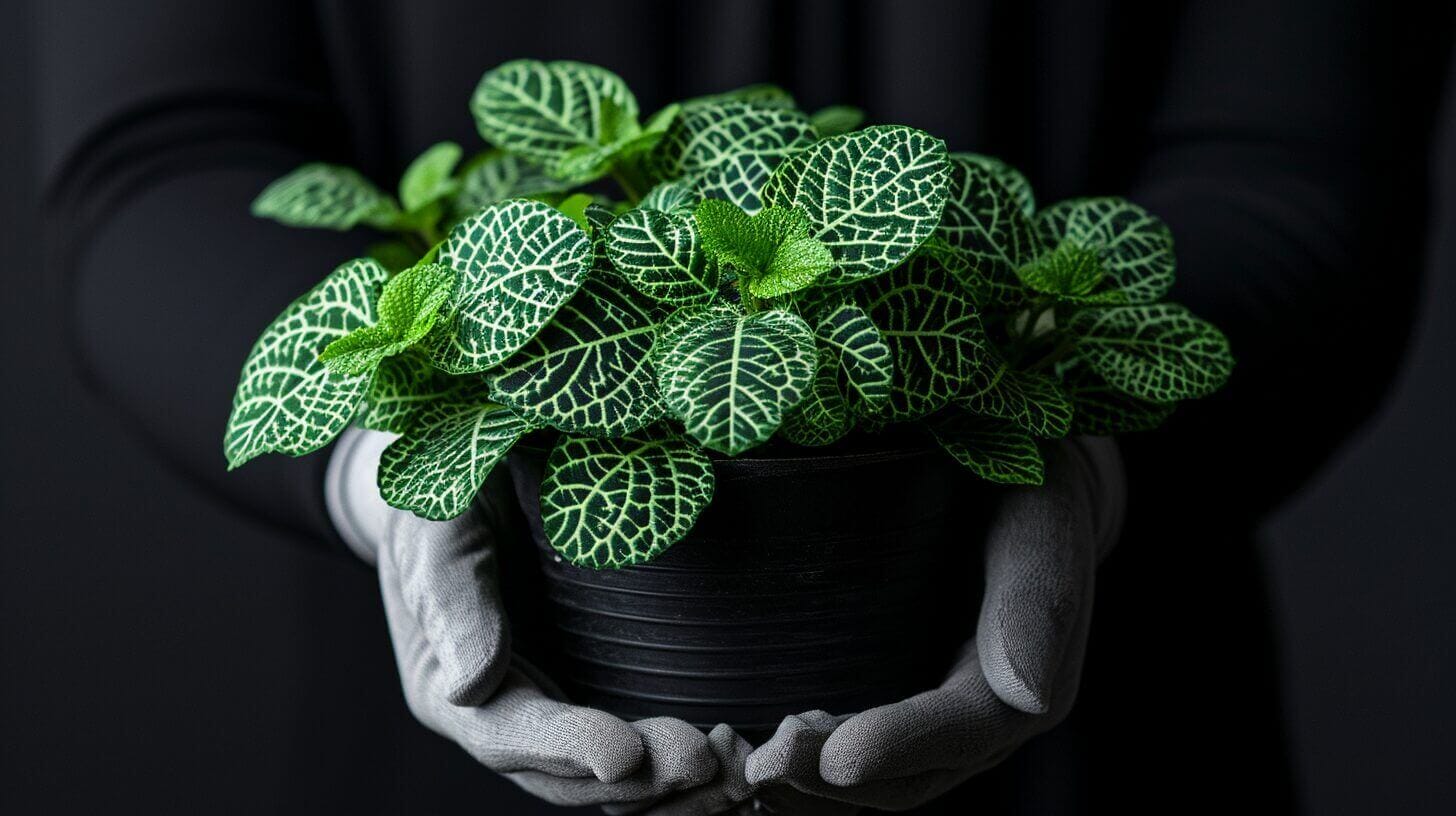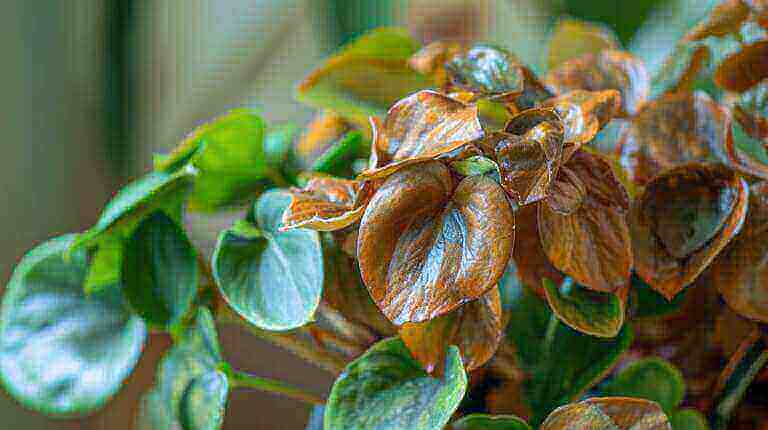Increasing Humidity for Fittonia Albivenis or Nerve Plant: Ideal Levels and Creative Solutions
Fittonias, also known as nerve plants, are tropical plants native to the rainforests of South America. They have beautiful dark green leaves with vibrant pink veins, and they thrive in high humidity environments. In order to keep your fittonias happy and healthy, it’s important to provide them with the ideal levels of humidity. This section will explore the benefits of increased humidity for fittonias and provide creative solutions to maintain the perfect moisture levels for these plants.
Key Takeaways:
- Fittonias are tropical plants that require high humidity to thrive.
- High humidity mimics their natural habitat and provides numerous benefits.
- Increased humidity helps purify the air and reduces stress for both the plant and its caretaker.
- Creative solutions such as terrariums, pebble trays, humidifiers, and misting can increase humidity levels for fittonias.
- Monitoring moisture levels and adjusting humidity solutions is crucial for their growth and health.
The Importance of High Humidity for Fittonia Plant
Fittonias, also known as nerve plants, thrive in high humidity environments. The benefits of providing these tropical houseplants with increased humidity are numerous and contribute to their overall health and well-being.
One of the key advantages of high humidity for fittonias is air purification. These plants have the ability to absorb and break down harmful volatile organic compounds (VOCs) present in the air. By increasing humidity, fittonias can effectively reduce the concentration of these pollutants, leading to improved indoor air quality and a healthier environment for both humans and plants.
Furthermore, maintaining high humidity can help reduce stress and anxiety, creating a calming atmosphere. Fittonias, like many tropical plants, are accustomed to the moist conditions of rainforests. By replicating those conditions with increased humidity, you can create an environment that mimics their natural habitat, promoting their overall well-being and helping them thrive.
In addition to these benefits, high humidity also plays a crucial role in ensuring the health of fittonias. The moist air helps prevent the leaves from drying out, reducing the risk of wilting and leaf damage. It also creates an inhospitable environment for pests and diseases, minimizing the chances of infestations or infections.
By recognizing the importance of high humidity for fittonias and providing the optimal conditions, you can enjoy the beauty of these tropical houseplants while promoting their health and longevity.
Captivating Quotes:
“Maintaining high humidity not only benefits fittonias but also improves indoor air quality and creates a soothing atmosphere.” – Indoor Plant Enthusiast
“High humidity ensures that your fittonias stay healthy and lush, preventing leaf wilting and minimizing the risk of pests.” – Houseplant Lover
Overall, understanding the importance of high humidity for fittonias is crucial for their care. By creating the ideal conditions, you can provide your plants with a thriving environment that supports their growth and well-being.
Creative Solutions for Increasing Humidity for Nerve Plant
When it comes to providing the ideal humidity levels for your beloved fittonias, there are several creative solutions that can help create a lush and tropical environment in your home.
One effective option is to create a terrarium for your fittonia. These glass enclosures not only provide a visually stunning display but also create a controlled environment with high humidity levels. The enclosed space helps to trap moisture, mimicking the natural habitat of these rainforest beauties.
Another simple yet effective method is using pebble trays. By placing a layer of water-filled pebbles beneath your fittonia’s pot, you can create a mini water reservoir. As the water evaporates, it increases the moisture in the surrounding air, maintaining a humid environment for your plant.
If you prefer a more automated solution, consider using a humidifier in the room where your fittonia resides. These devices emit a fine mist that increases humidity levels, ensuring your plant receives the moisture it needs to thrive.
In addition, regular misting with a plant mister can provide a quick boost in humidity. This simple task ensures that your fittonia’s leaves stay moist and hydrated, preventing them from drying out in dry indoor environments.
Lastly, grouping your fittonias with other plants or placing them in close proximity can create a microclimate with higher humidity. As plants release moisture through transpiration, the surrounding air becomes more humid, benefiting your fittonias.
Remember, it’s essential to monitor the moisture levels and adjust the humidity solutions as needed to match your fittonia’s specific requirements. By implementing these creative solutions, you can increase the humidity for your fittonias and provide them with the optimal conditions for growth and overall health.
FAQ
Why is high humidity important for Fittonias?
High humidity mimics their natural habitat and provides numerous benefits such as improved air quality, reduced stress, and optimal plant health.
How do I monitor and adjust the humidity levels for my Fittonias?
It’s important to regularly check the moisture levels and make necessary adjustments to the humidity solutions based on the specific needs of your Fittonia.
What is a fittonia albivenis?
Fittonia albivenis, also known as the nerve plant, is a type of tropical houseplant known for its striking foliage and vein patterns. It’s a popular choice for indoor gardens and terrariums.
How do I care for a fittonia albivenis?
Fittonia albivenis needs indirect light, high humidity, and regular watering. The plant may wilt if it gets too much direct sunlight or not enough water. It’s also important to keep the soil well-drained to prevent root rot.
Can fittonia albivenis be grown in a garden?
While fittonia albivenis is typically grown as a houseplant, it can be grown in a garden if the conditions are right. The plant prefers a warm, humid environment with indirect light.
What type of fittonia is best for low humidity environments?
Fittonia verschaffeltii, also known as the mosaic plant or nerve plant, is a variety that can tolerate lower humidity levels better than some other types. However, all fittonias prefer high humidity, so it’s important to monitor the plant’s health and adjust care as needed.
What are the best plants to pair with fittonia albivenis in a terrarium?
Other tropical plants that prefer high humidity and indirect light can be good companions for fittonia albivenis in a terrarium. This includes plants like the polka dot plant and various types of ferns.







